How Long Does It Take Concrete to Dry?
Important Point
24 to 48 hours is the time required for ordinary concrete to dry for walking on it. After 7 days movement of light vehicles can be allowed provided all conditions are properly maintained.
After 28 days it dries totally and attains total strength the strength of concrete is usually measured after 28 days of drying.
So,a time span of 48 hours and 28 days is required to initially set and completely dry out of concrete.
During those 48 hours wet curing at about 85 % relative humidity is done. Here condensation will help slumps not to form moisture permitting will form a semi-dry skin that will help in further drying until 95-98 % hydration is taking place it happens in 5 days.
Then depending on weather conditions full dryness in 28 days will be received. In order to gain the above drying conditions all, all other conditions like w/c ratio, humidity, workability, and other things must be properly maintained.
Special concretes if used will have higher or lower drying times if fast drying is required or late drying is required that can be done.
For drying you must make sure the temperature is properly maintained by curing. If not so done then it will not gain proper strength and will be brittle weak and prone to cracking.
It is very much important for you to understand what is the time span from the initial pouring of concrete to proper curing. The times of drying can also be altered by adding admixture and variation in other products also.
Initial Drying Times for Concrete Construction Process
It is a very complicated question to be answered what is the time required for concrete to dry since different types of cement used in concrete and as well as aggregates will give you different times of drying?
Concrete usually goes through several stages of drying. Initial drying is one of the stages. It is very important for anyone to understand the initial drying time since this is the time when concrete is being worked by masons using hand tools.
Waiting too long will not allow you to work with the trowel properly. By waiting too long concrete will get hard which will not allow you to trowel properly.
Within an hour or two concrete is poured the first stage of drying will happen these lasts for only an hour or so. After it gets harder to trowel.
Due to the weather conditions, it gets difficult to exactly say when concrete starts to dry initially. The concrete will dry faster in hot climates.
You will be able to float the concrete after it is poured and just starts to harden. The concrete will be fairly smoothened while at this stage hand tools are not used as it is not hard enough to walk on it. With the passage of time of about 1-2 hours after pouring concrete gets drier and you will be able to walk on it. You must use a kneeler tool to stand on it directly you must not stand.
When Does Concrete Start Drying?
After the concrete is prepared heat of hydration takes place and the water present in the concrete dries. After getting evaporated the water from inside the surface deep at the surface starts moving through capillaries and moves up to the surface.
During this time surrounding air will be able to hold more water vapor evaporation will continue and the drying of concrete starts during this time.
So, you will be having very little time for pouring them into the forms since the time is moving. Within the passage of little time drying, hardening, and hydrating will start.
With the progression through a number of stages unless and until concrete is being cured fully hydration will surely continue to occur.
Crystals having a hardness like that of rock being formed inside the concrete which will help in binding your sand and gravel together.
Due to this chemical reaction concrete will be able to achieve the total compressive strength. You will see if the concrete gets dried too quickly without any controlled steps or precautions you will not be able to achieve the required strength of yours and cracks might occur.
Proper time given to dry will help the concrete to dry properly since it will allow the proper crystal to form. If you see very small or limited time is available for concrete to be spread into the formwork, vibrate, spread properly, and properly level. So, everyone should be aware of what is to be done and by whom.
You should be properly prepared while working with concrete, as it starts to dry quickly. The project might get ruined if not done properly. So, preparation will give you success.
How Long Should Concrete Cure Before Putting Weight on It?
With cement and aggregate materials, concrete is made up of. With the help of water, cement bonds to the aggregates after that an exothermic reaction takes place known as hydration.
Due to the speed of the reaction, it will affect concrete’s hardness, durability, permeability, and resistance. Curing is done to protect the concrete from loss of moisture and keep the concrete moist to gain enough strength.
Some types of concrete attain 20 % of their strength within 24 hours and others up to 50 % in the same period. Weight can be placed on the concrete after the curing of concrete is done for 7 days from the date of placing concrete. Because after 7 days concrete attains 67 % of the designed strength.
While if mineral admixtures or blended cement is used curing must be done for 10 days before putting weight on it. For concrete exposed to dry and hot conditions that period should not be less than 10 days.
Since curing is a chemical process, it will not end as long as moisture is present in it. Within a span of 1-2 hours of drying with the help of a kneeler board, you will be able to work on concrete.
A span of 24 – 48 hours should be given to concrete before you start to walk on concrete. If that time is given walking can be done.
Within a week’s time span car and vehicle, load can be applied to concrete.
If you want your concrete to bear some extra heavy load then you must give a time gap of 28 days to concrete for getting properly dried.
Factors That Affect How Long Concrete Takes to Dry?
The drying time of concrete is affected by temperature and humidity. The other two factors are wind and the type of concrete mix that affects drying time.
Temperature
The drying time of concrete can speed up or slow down due to temperature changes. Evaporation is accelerated and drying speeds up during hot and warm temperatures and it slows down due to cooler temperatures.
Concrete will set up and dry fast if the evaporation of moisture of concrete is fast. At 1000 F concrete will dry in 2 hours, at 800 F it will take 4 hours to dry, at 600 F it will take 8 hours to dry, and so on. While you should keep in mind that very fast drying might make concrete brittle.
Layer Thickness
Thicker layers will take more time to dry than thinner layers this is so because of greater surface area and faster rate of evaporation.
If the concrete layer is more than 4 inches in thickness it should not be poured in one layer, multiple layers should be poured providing suitable waiting times.
Wind
Compared to humid wind a warm wind will suck moisture out of concrete faster so it will accelerate the drying of concrete. Accelerated surface drying speed is the main concern which can cause cracking due to shrinkage.
With the fast movement of wind, the risk to concrete’s strength increases, since the concrete surface can dry faster as compared to the inner mass. The accelerated surface drying as well as shrinkage might lead to warping also.
Moisture
The strength of the concrete is affected by too much or too little water in the concrete. Fewer bonds will be formed due to little moisture, which accelerates drying and results in weaker products since the concrete will then dry up a little faster.
Too much moisture will result in the weakening of the top layer thus resulting in surface flaking. So, the w/c ratio should be properly calculated and maintained while adding water.
Type of the Concrete Mix
The Drying times are affected by the type, composition, quality, and fineness of cement, the amount of gypsum, along with any added accelerates in the mix of concrete.
While using accelerates you should be cautious as it might affect the finished product’s strength. Using the accelerator can accelerate the setup and initial bonding which will help in drying quite fast.
Admixtures & Additives
How fast concrete will dry is also dependent on the amount of aggregate present. In comparison to coarse materials, fine materials offer more effective protection against cracks because of the low capillary porosity.
Which in turn offers faster capillary porosity. Moisture will play a very important factor in the drying of concrete as the change in moisture will easily affect the drying of concrete.
Hot Weather Greatly Affects Concrete Dry Times
The drying time of concrete is greatly affected due to hot weather the rate of drying increases which can also cause shrinkage cracking and cold joints.
A thumb rule is there if the temperature increases by 20 degrees Fahrenheit, then the drying time will reduce up to 40 percent.
With the increase in temperature drying time reduces.
If concrete is placed at a temperature above 40 degrees Centigrade then it is considered hot weather. The drying times get reduced since the rate of hydration is increased with increased temperature and water gets evaporated more quickly.
You must be well prepared to work fast in a hot climate since the concrete gets dried very quickly. If not, everything is done properly it will dry up the surface too fast which might cause cracks so you have to keep the surface moist.
You must follow some steps while pouring in hot weather:
You must try to use cold water for mixing, an internal reaction is produced inside the concrete which causes heat if cool water is used in hot weather it helps to cool down. Before any pouring, you must wet down the forms and the ground.
You must try to keep the dry mix prepared in a shed in order to prevent the increase in the ingredient’s temperature. When the temperature is cooler in the morning schedule a pour of concrete during that time.
As the work time will be less you must put extra workers to work. Finish Work Effects Concrete’s Dry Time In most of the project half of the time is spent pouring and leveling of concrete and another half in finishing.
The first step of finishing work is screeding the surface. It is the process of removing the excess concrete by properly leveling the top of the slab. It is done with the help of a 2*4 metal screed.
Use a sawing motion back and forth by using the straight edge of the screed towards you across the slab in order to make it flat. For achieving the desired result one pass in each direction is quite enough. By screening you will be able to remove excess concrete and water.
A concrete float is required to finish the concrete surface and smoothen it. In order to knock down rocks’ jigs can be used for that.
For working on concrete possible kneeler boards are to be used. For making the surface properly smooth hand troweling is required.
A textured finish can be given with a broom.
For giving rounded edges you can use edge tools. Longer slabs will require more time to be finished so properly you should carry out the finishing work. You must pour that amount of concrete which can be handled by you either you will not be able to properly finish it or will not get properly dried.
If you notice that the concrete is getting hardened too fast then you can skip the control joints thereby focusing on finishing the work. With the help of a concrete saw, you will be able to cut the control joints.
The moisture will be drawn out of the concrete with the help of finish works. So, overworking should not be done. Masons know exactly how much finishing should be done. If you doing it for the first time start as soon as the concrete starts to dry and harden.
How Long Does Concrete Take to Cure Completely?
Curing to full-strength concrete requires 28 days. If 3500 PSI concrete is bought, which means the mix will have 3500 pounds per square inch of compressive strength at 28 days after assuming all the ingredients are mixed properly.
Although to acquire full strength of concrete 28 days is required, even after that it can be cured. After the cement particles get bonded with water concrete mix gets hardened. Concrete will get hardened with due passage of time even after achieving full strength.
The continual hardening is known as hydration. Cement will form a bond as long as it will be in contact with moisture and keep hardening.
The entire curing process will take nearly around a month, but you can use it quite sooner. Different projects will have different timings depending on various factors like weather, and concrete mix. 7 days should be given at least for proper curing.
Some types of concrete might also require 10 days. Different types of curing methods can give different advantages but the time will be near about same for all types.
What Is Curing and What Does It Do to Concrete?
Curing is the process that helps the concrete to retain moisture for gaining proper strength by delaying drying shrinkage unless and until the concrete is strong enough.
It is done so that the water lost by the heat of hydration and temperature effects can be properly balanced by adding moisture so that the net w/c ratio is properly maintained.
Some provisions should be kept for adding impervious covering or any type of implementation of curing compounds. Proper curing if done will improve strength, durability, water tightness, and wear resistance.
It is a chemical process that will occur between water and cement molecules. With the growth of crystals inside the concrete it will attain strength.
The above-mentioned crystals will grow due to the reaction between Portland cement and water. The above reaction is termed hydration.
If you do not give the proper amount of water to the quantity of cement available in your concrete it will not help in the proper formation of crystals which resists the concrete to attain proper strength.
Whereas if proper water is present then crystals will be formed as the water bonds with sand and gravel for forming hard concrete.
Curing can be done by water curing, membrane curing, and heat application.
The following purposes are served by curing:
- Moisture is properly retained in the slab in order that hydration occurs in concrete and gains proper strength.
- The drying shrinkage will be delayed unless the concrete gains the proper strength for resisting cracking.
- Strength, durability, water tightness, and wear resistance will be improved by proper curing.
- Temperature is another important aspect of curing since you cannot keep the temperature too much hot or cold. The hydration reaction will slow down if the fresh concrete is cooled too much.
- The temperature of concrete should be given more importance than the surrounding temperature. You can assume below 50 degrees Fahrenheit hydration will slow down.
- The problem will be the opposite for hot concrete since the reaction occurs too fast. Very fast temperature differentials within the concrete will form cracks.
- Quick reactions will not result in the proper formation of crystals so less strength is attained by the concrete.
How Long Does It Take 4 Inches of Concrete to Cure?
The drying action of 4 inches of concrete occurs in various stages. The mixture of the concrete prepared with ingredients along with the weather conditions will affect your drying times of concrete that should be remembered by you.
You will see that high-strength concrete mix will take more time to set rather than fast-setting concrete, this is the way they are designed for.
Now I will let you know the details of the curing time for 3500-4000 PSI concrete mix which will not have any kind of admixture or accelerants in it.
The details are given by making an assumption that all the water content weather conditions and all other conditions are ideal like temperature will be between 60 to 80 degrees Fahrenheit.
The breakdown which can be expected will be:
- With the help of kneeler boards, concrete can be worked on in 1 to 2 hours of time.
- In 24 to 48 hours 4 inches of concrete will be properly dry to walk on it.
- In 7 days, the concrete will dry enough for allowing vehicles to move on it.
- In 28 days, the total curing of concrete will be done.
This timeline will also not be changed for thicker concrete. A little more amount of time can be added to thicker concrete but you will not need much more time to be added half an hour extra will work.
Thicker concrete surely sets slowly but you will see as compared to thickness weather conditions, water, and mixtures affect drying times more.
How Long Does Concrete Take to Dry Indoors?
With the use of kneeler boards in 1 to 2 hours of pouring concrete it can be worked upon. At a time, span of 24 to 48 hours 4 inches of concrete will dry up to that limit so that people can walk upon it.
In 7 days driving of vehicles can be allowed. In 28 days, the whole concrete surface will be cured and properly dried gaining the required strength.
All the above times can be maintained properly due to the great advantage of drying concrete the indoors is of being able to control the environment which will in turn make your concrete drying times reliable and not variable.
Another problem of adverse weather conditions like direct heat of the sun and harsh chilly coldness can be avoided. Windy problems are also subtracted.
With the help of fans and mister, you will be able to control the surface temperature and dampness all that is to be done is just buy them. Due to these advantages, the time required for drying concrete can be maintained properly.
How Long Should Concrete Dry Before Removing Forms?
Generally, 48 hours time is given before removing the forms. It will be totally dependent on the project and the size of the forms to be used. 48 hours is given to 4 to 6 inches slab before removing the forms. 7 to 10 days are given to building poured foundation walls.
You can remove the forms after 48 hours but it is generally not so done as it bears a much load and being structural more waiting time is given.
Concrete’s drying time is affected by the outside atmosphere which should be kept in your mind. Concrete will take more time to cure in extremely cold weather.
To counteract this problem, you need to provide forms for a longer time. 20 days might be given to formwork for foundations in cold weather. It can be very dangerous to remove the formwork before the concrete has hardened this can lead to the breaking of the foundation.
While removing the formwork certain points are to be kept in mind:
- All the stakes and kickers supporting the formwork are to be removed. If slopes are present then start from the top.
- The boards which are fastened by nails or screws are to be removed.
- After tapping on the top and side of the boards with the help of a hammer for loosening the form.
- While pulling the boards away from the slab, you must take care not to scar or chip the surface of the concrete.
- For separating the formwork from the slab, you can use a wooden wedge or pry bar if required. Gauging of concrete is not to be done.
- In a dry location try to store the reusable things by removing them and cleaning them.
- In cold weather, if the formwork is removed too fast then the edges of the concrete will get crack or might crumble.
- So, in colder climates, you must keep concrete forms for longer times.
- In hot weather, you need not keep formwork for longer times.
How Long Does It Take Concrete to Dry?
It generally takes about 24 to 48 for newly poured concrete to dry or harden enough to be able to walk on the surface. Cement is the binding ingredient in concrete.
How Long Does 6 Inches of Concrete Take to Cure?
How long does four to six inches of concrete take to cure? As stated previously, concrete takes approximately 26-30 days to reach its full strength. If the concrete is professionally poured and floated, the curing process should be sound and ensure proper hardening of the concrete base.
How Long Does Concrete Take to Dry to Walk on?
Concrete typically takes 24 to 48 hours to dry enough for you to walk or drive on it. However, concrete drying is a continuous and fluid event, and usually reaches its full effective strength after about 28 days. Here are some of the basic facts regarding the question of concrete drying and curing time.
How Long Should Concrete Cure Before Driving on?
It is generally recommended that you wait at least a week before driving on the surface with a passenger vehicle.
4 Inch Concrete Curing Time
To protect your new slab and ensure an exceptional finished product you should wait 24 hours for foot traffic (including pets), 10 days to drive light vehicles or add furniture, and 28 days for heavy pick-up trucks and RVs. After 28 days the concrete is cured and you will have a strong and stable slab.
How Long Should Concrete Cure Before Putting Weight on It?
Concrete starts hardening as soon as it’s poured, but it’s far from ready. Give it at least 24 hours of concrete cure time before allowing any light foot traffic and even longer before putting any significant weight on the surface.
How Long Should Concrete Cure Before Building on It?
Poured concrete can take up to 28 days to fully cure. However, while it takes concrete four weeks or more to fully cure, you won’t have to wait this long to start framing or cutting concrete. Generally, you can start framing on a poured concrete slab seven days after it is poured.
How Long Does It Take for Concrete to Dry in Cold Weather?
Ideal temperatures (50-60°F) should be maintained for about 48 hours for the concrete to reach optimal strength as it sets.
Hot Weather Concrete Temperature
Concrete applications may be considered hot weather concrete at temperatures ranging from 77 to 95 degrees Fahrenheit depending on the specific application.
Cold Weather Concreting
What is Cold Weather Concrete? The American Concrete Institute (ACI) defines cold weather concreting as, “a period when the average daily ambient temperature is below (or expected to fall below) 40°F (5°C) for more than 3 successive days.
Hot Weather Concrete Precautions
The precautions may include some or all of the following: Moisten subgrade, steel reinforcement, and form work prior to concrete placement. Erect temporary wind breaks to limit wind velocities and sunshades to reduce concrete surface temperatures.
When Is It Too Late to Cure Concrete?
If the concrete has already “cured” for 10 days without any wetting or moisture retention, it is basically too late…. once all the water essentially dries out of concrete, it stops hardening.
What Is Curing and What Does It Do to Concrete?
Curing is the process of maintaining satisfactory temperature and moisture conditions in concrete long enough for hydration to develop the desired concrete properties. The potential strength and durability of concrete will be fully developed only if concrete is properly cured.
How Long Does It Take 4 Inches of Concrete to Cure?
For concrete to dry and reach its full strength, it typically takes about 28 days per inch of slab thickness.
How Long Does Concrete Take to Dry Indoors?
Your concrete should be solid enough to walk on, without leaving footprints, after anything from 24 to 48 hours. By seven days, your concrete should be cured to at least 70 percent of its full strength.
Removal of Formwork for Slab
When should formwork be removed? The removal of concrete formwork also called as strike-off or stripping of formwork should be carried out only after the time when concrete has gained sufficient strength, at least twice the stress to which the concrete may be subjected to when the formworks are removed.
Like this post? Share it with your friends!
Suggested Read –
- All About Concrete Flatwork | What Is Concrete Flatwork
- All Cement Price List June 2023 | Cement Price Per Bag | June 2023 Cement Price
- First Angle Projection & Third Angle Projection Symbol (Orthographic Projection)
- All About Concrete Gets Too Wet | What If Concrete Is Too Wet | Concrete’s Ingredients
- What Is Dampness | Sources of Dampness in Building | Effects of Dampness in Building | Causes of Dampness
Originally posted 2023-06-30 17:15:14.

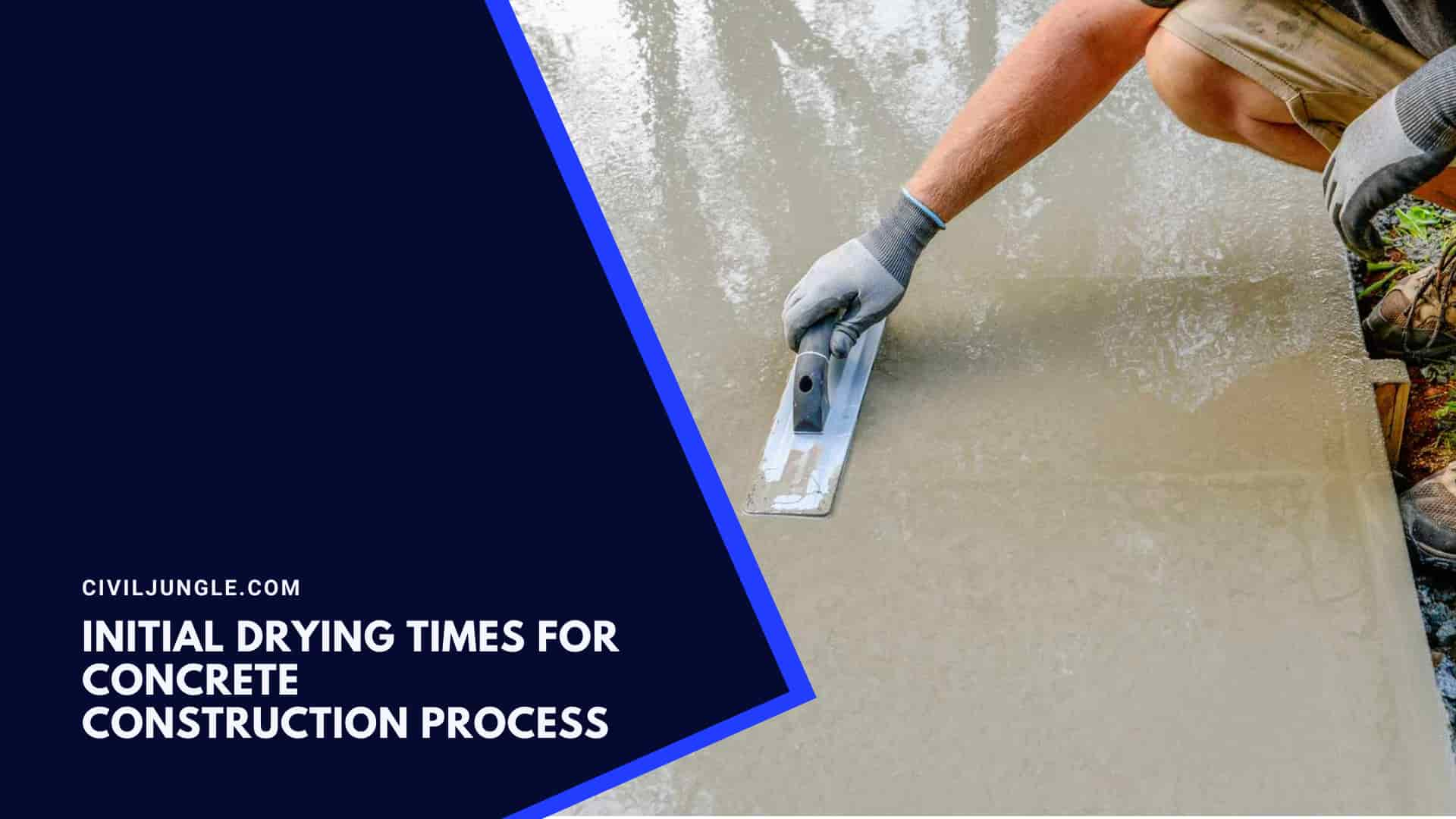
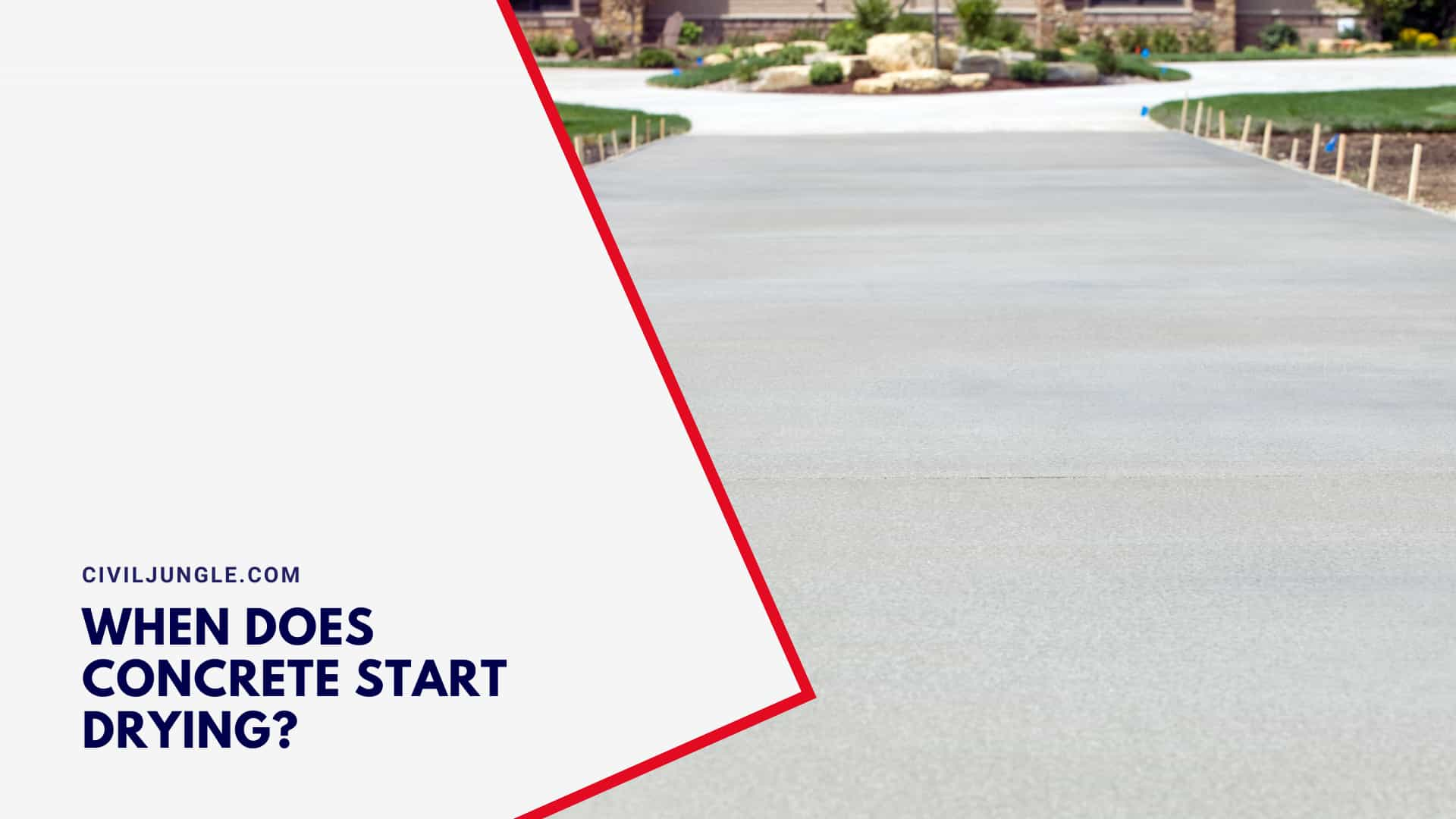

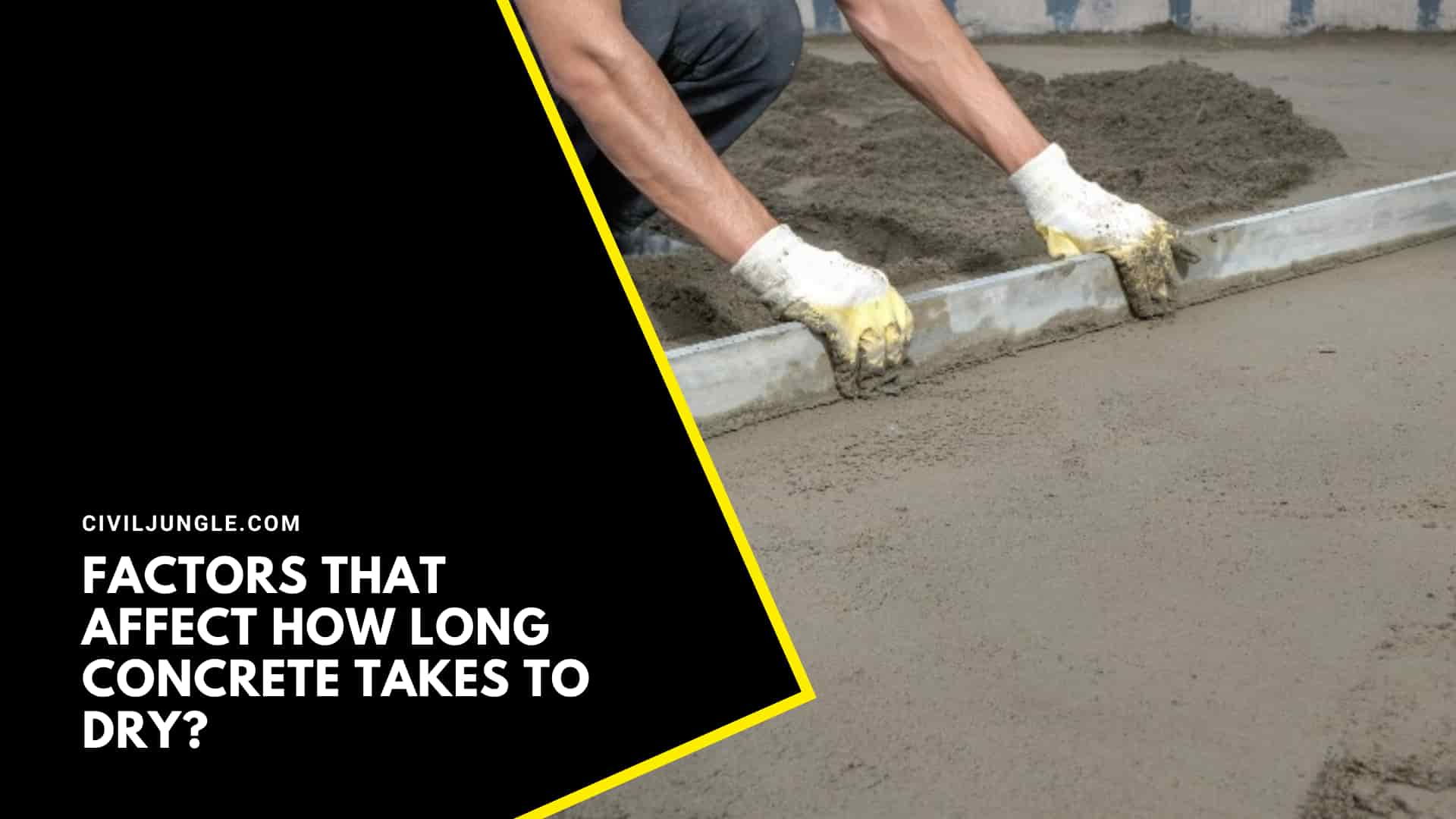
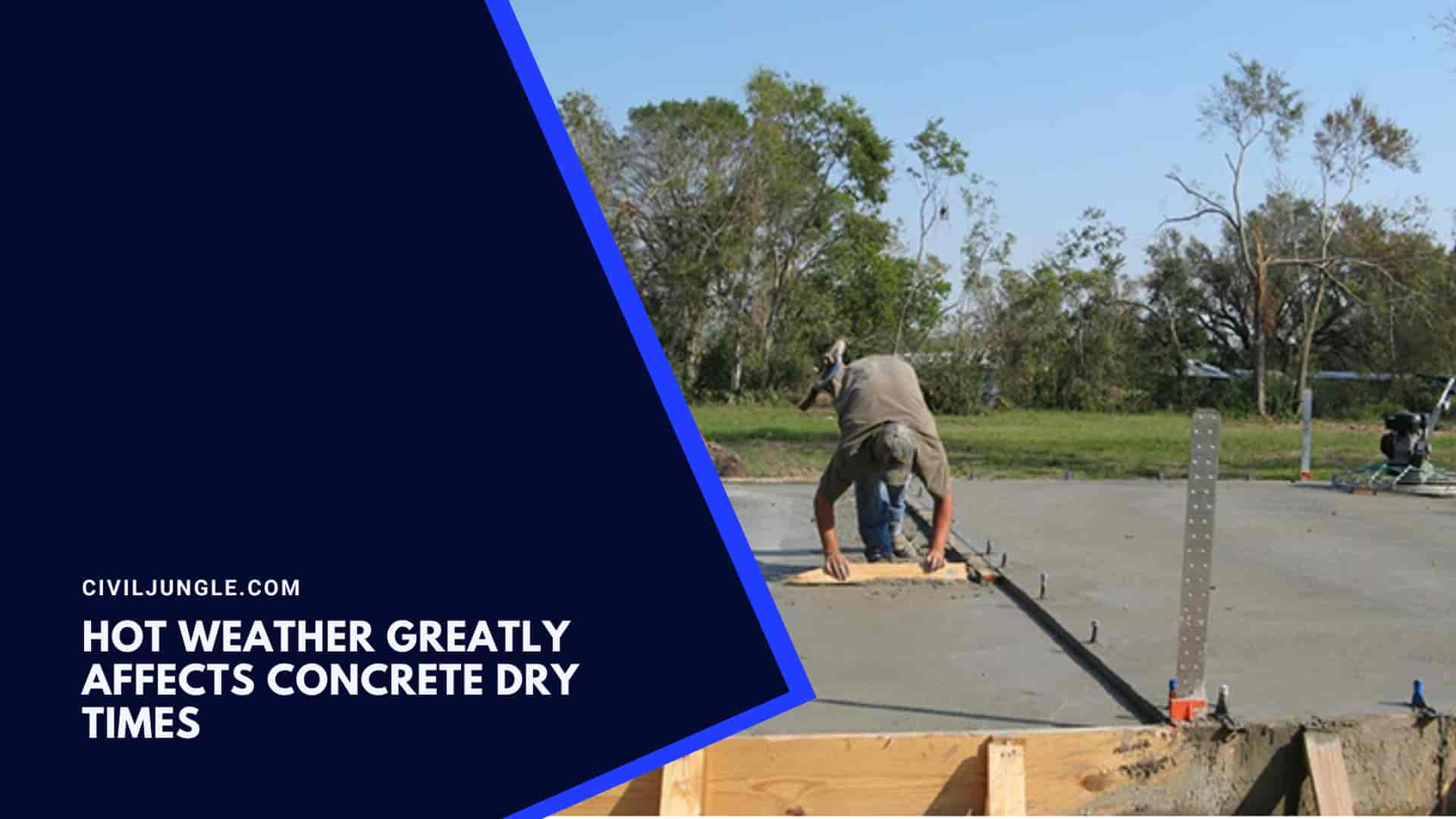
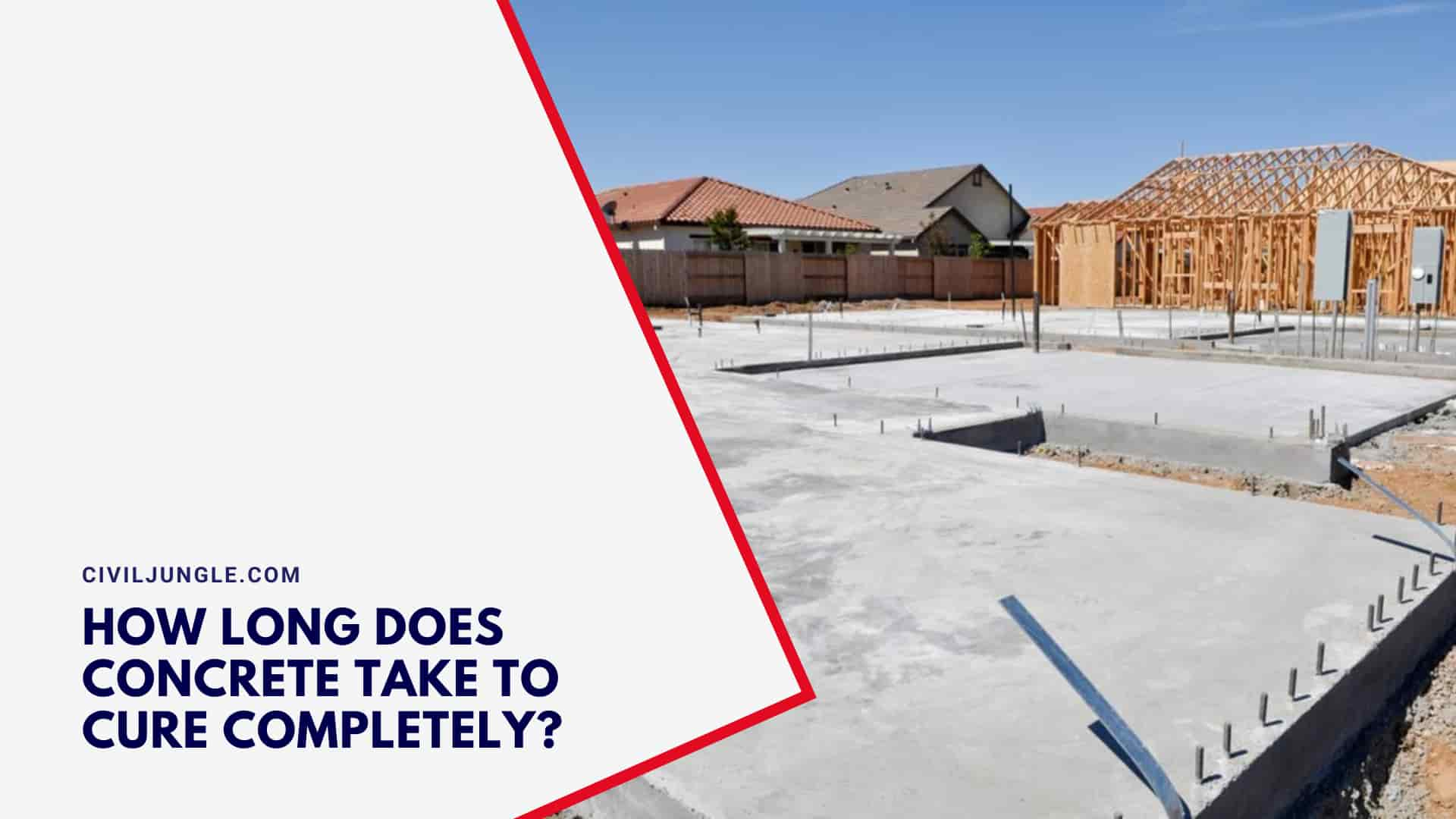


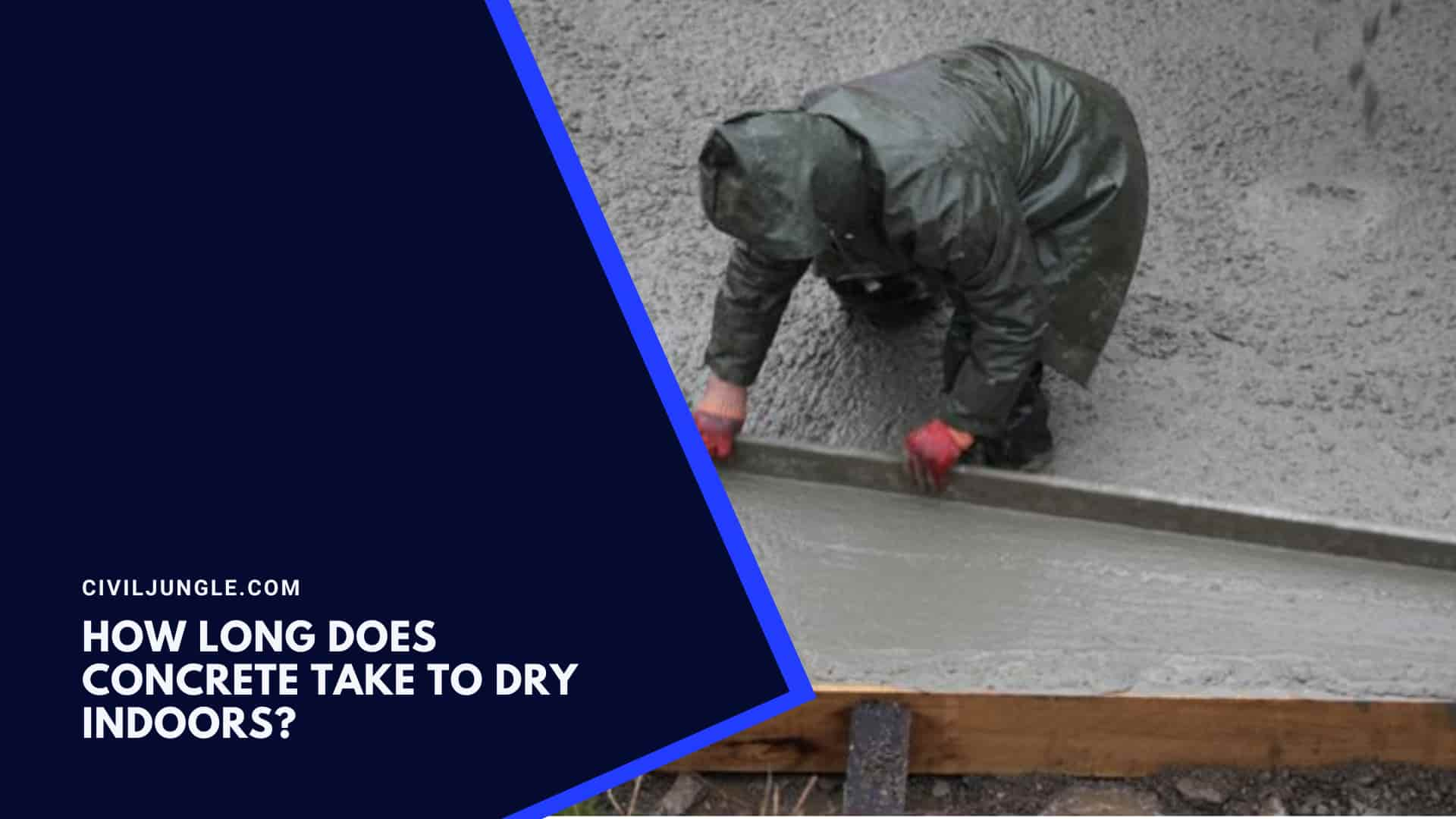


Leave a Reply